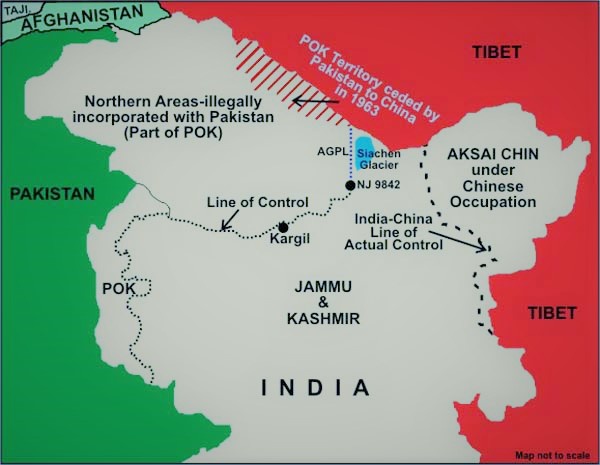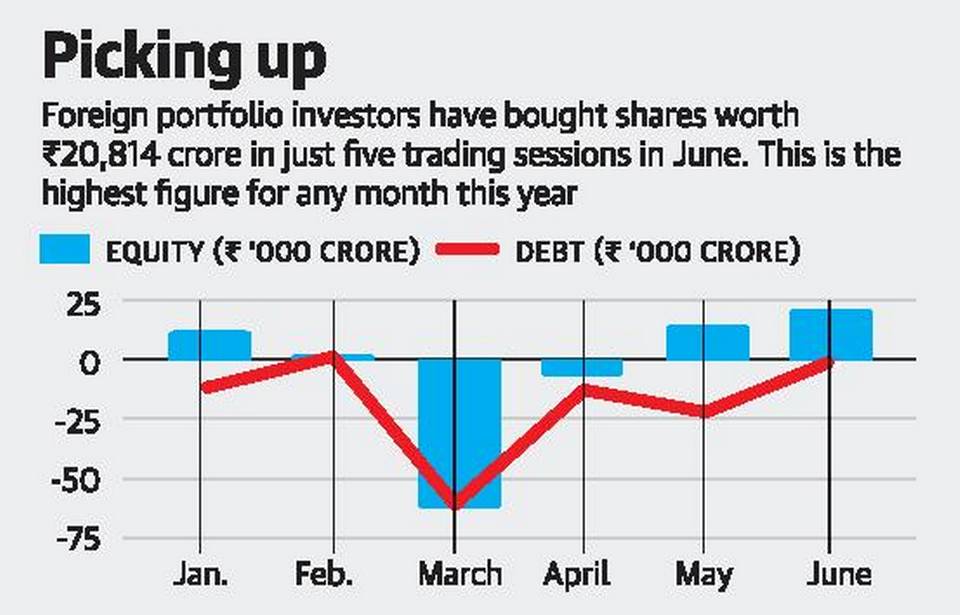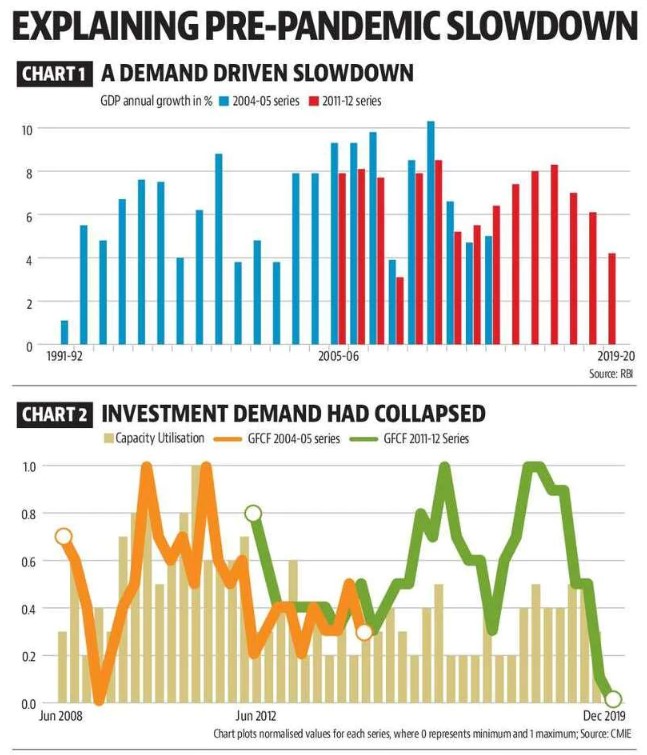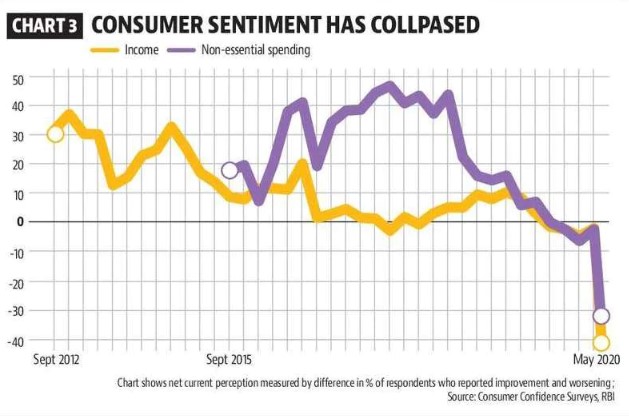Contents
- India, China hold diplomatic talks amid border tensions
- Vote for UNSC Seat: India launches campaign brochure
- Massive spike in foreign flows into market
- Addressing pre-Covid issues is crucial for India’s recovery
- All states must create jobs for migrants: SC
- Draft rules prohibit use of drones for delivery
INDIA, CHINA HOLD DIPLOMATIC TALKS AMID BORDER TENSIONS
Focus: GS-II International Relations
Why in news?
India and China held talks between their foreign ministries and agreed to follow a consensus that differences should be handled peacefully and should not become disputes, in the highest-level diplomatic engagement since tensions along the Line of Actual Control (LAC) erupted in early May.
Decision taken by both sides
After reviewing the state of bilateral relations including the current developments, both sides agreed to handle their differences through peaceful discussion bearing in mind the importance of respecting each other’s sensitivities, concerns and aspirations and not allow them to become disputes
What had happened?
Border tensions between India and China were rising, with stand-off situations and heavy deployments reported in at least four spots on the LAC.
Line of Actual Control

- The Line of Actual Control (LAC) is a demarcation line that separates Indian-controlled territory from Chinese-controlled territory in the former princely state of Jammu and Kashmir, formed after the 1962 war.
- At present, Line of Actual Control (LAC) is the line separating Indian areas of Ladakh from Aksai Chin. It is concurrent with the Chinese Aksai Chin claim line.
- The countries disagree on the exact location of the LAC in various areas, so much so that India claims that the LAC is almost 3,500 km long while the Chinese believe it to be around 2,000 km long.
- LAC is divided into three sectors: the eastern sector which includes Arunachal Pradesh and Sikkim, the middle sector in Uttarakhand and Himachal Pradesh, and the western sector in Ladakh.
- LAC in the eastern sector consisting of Arunachal Pradesh and Sikkim is called the McMahon Line.
- The McMahon Line was a negotiation between India and Tibet under Simla Convention of 1913-1914, without the participation of the Chinese government and China considers the McMahon Line illegal and unacceptable.
- The LAC mostly passes on the land, but Pangong Tso is a unique case where it passes through the water as well. The points in the water at which the Indian claim ends and Chinese claim begins are not agreed upon mutually.
-Source: The Hindu
VOTE FOR UNSC SEAT: INDIA LAUNCHES CAMPAIGN BROCHURE
Focus: GS-II International Relations
Why in news?
India is a candidate for a non-permanent seat at the UNSC for a two-year term beginning January 2021.
India launched the campaign brochure for the voting that is to take place for the UNSC Seat (non-permanent).
Significance
This will be the eighth time India will occupy a non-permanent UNSC seat, with its last stint in 2011-2012.
India is guaranteed a place in the UNSC as it is the sole candidate for Asia-Pacific but needs two-thirds of the members of General Assembly to vote in its favour.
2021 is also the year that will mark its 75th year of Independence, which was why it was targeted by India.
The Islamic Republic of Afghanistan agreed to step aside for the 2021-22 seat, as gesture to the friendship between India and Afghanistan.
Highlights of what India aims to bring to the table
India’s overall objective during this tenure in the UN Security Council will be the achievement of N.O.R.M.S: a New Orientation for a Reformed Multilateral System
Listing the challenges, the minister said traditional and non-traditional security challenges continued to grow unchecked and that terrorism is the worst of such challenges.
Click Here to read more about The United Nations Security Council (UNSC) (2nd Article)
Click Here to read more about India’s Case for Permanent seat at UNSC
-Source: The Hindu, Times of India
MASSIVE SPIKE IN FOREIGN FLOWS INTO MARKET
Focus: GS-III Indian Economy
Why in news?
Within the first week of June 2020, the quantum of foreign flows in the equity market has surpassed that of any other month in 2020.
The cumulative foreign flows in equities this year, however, is still negative, since March and April 2020 saw huge outflows.

Foreign portfolio investors (FPIs)
- Foreign portfolio investment (FPI) consists of securities and other financial assets held by investors in another country.
- In economics, foreign portfolio investment is the entry of funds into a country where foreigners deposit money in a country’s bank or make purchases in the country’s stock and bond markets, sometimes for speculation.
- It does not provide the investor with direct ownership of a company’s assets and is relatively liquid depending on the volatility of the market.
- Along with foreign direct investment (FDI), FPI is one of the common ways to invest in an overseas economy. FDI and FPI are both important sources of funding for most economies.
- In India there has been a net FPI outflow in the recent past due to strengthening of advanced economies and taxes imposed by some protectionist countries.
-Source: The Hindu
ADDRESSING PRE-COVID ISSUES IS CRUCIAL FOR INDIA’S RECOVERY
Focus: GS-III Indian Economy
Factors that Affect the Economic Impact of the Pandemic
How hard the Economic Impact of the Pandemic will be felt is dependent on three factors:
- The economic situation before the pandemic hit.
- How the pandemic interacts with existing economic and social fault lines.
- The policy response to the pandemic.
India’s Economic situation before the pandemic (Remember only the trend, not the exact numbers)

- India’s GDP growth has been declining since 2017-18.
- GDP growth was 8.3% in 2016-17. It fell to 7% in 2017-18, 6.1% in 2018-19 and 4.2% in 2019-20.
- The economy has never lost growth momentum for three consecutive years since 1991-92.
- Economists classify all problems that are based on linkages into two categories: demand side versus supply side, and structural versus cyclical.
- In December 2019, Chief economic advisor claimed that the economic slowdown is a lot more on the cyclical side.
- India’s growth momentum slowed for three years without an external shock, raises doubts on the validity of claims of a cyclical slowdown.
What is a Cyclical slowdown?
- A cyclical slowdown is a period of lean economic activity that occurs at regular intervals. Such slowdowns last over the short-to-medium term, and are based on the changes in the business cycle.
- Measures to recover from cyclical slowdown:
- Generally, interim fiscal and monetary measures, temporary recapitalisation of credit markets, and need-based regulatory changes are required to revive the economy.
What is a Structural slowdown?
- A structural slowdown, on the other hand, is a more deep-rooted phenomenon that occurs due to a one-off shift from an existing paradigm.
- The changes, which last over a long-term, are driven by disruptive technologies, changing demographics, and/or change in consumer behaviour.
- In such a scenario, a monetary and fiscal stimulus won’t be enough to revive the economy.
- Fixing such problems would require the government to undertake some structural policies. The best example in this regard would be the reforms that were carried out to address the crisis in 1991.
Government’s response
The government’s policy response until 2019-20 was largely a supply-side response such as: slashed corporate tax rates and RBI’s reduced interest rates.
Worsening Situation of Investments
- Investment demand follows capacity utilisation levels.
- Firms will only invest if they can utilise the existing capacity.
- The trend in the last few years shows that businesses did try to invest even when capacity utilisation levels were low.
- Such investments have proved to be unwise. Demand did not grow and capacity utilization levels plummeted further.
Consumer Sentiment Factor

Consumer sentiment seems to be weakening, dragging down demand. RBI’s consumer confidence surveys show that current perceptions on income and non-essential spending have collapsed in the recent period.
Conclusion arguments
- Indian economy was likely facing a demand-driven, perhaps even structural slowdown before the pandemic.
- The policy response most likely misjudged it for a cyclical supply-side problem.
- RBI’s Monetary Policy Committee also pointed to weak demand as a problem in its resolutions on 2019.
- Unfortunately, the only policy tool available to the committee, interest rate cuts, can do little to boost demand.
-Source: Hindustan Times
ALL STATES MUST CREATE JOBS FOR MIGRANTS: SC
Focus: GS-II Social Justice
Why in news?
The Supreme Court has taken suo moto cognisance of the ‘migrant labourers’ issues and proposed that all states should put on record what scheme they have prepared for providing employment to the migrant labourers returning back to their hometowns.
What have some States done so far?
- In Bihar, about 3 million migrants had returned to their hometowns and no more are stranded in any states. Bihar has undertaken skill mapping of those workers who returned and have so far covered 1 million people.
- Uttar Pradesh claimed that the state had not charged the workers for their travel expenses and food.
- Kerala was the only state which informed the court of its inability to pay for the fare of migrant workers.
- West Bengal stated before the court that it does not have data on migrant workers who intend to reach the state.
- (For answer) Hence, it is crucial to note that the efforts to support Migrant workers who have returned is inadequate and might lead to increased levels of unemployment in the near future.
Click Here to read more about other Suo Moto Actions taken by the SC in the matter (4th Article)
-Source: Hindustan Times
DRAFT RULES PROHIBIT USE OF DRONES FOR DELIVERY
Focus: GS-II Governance
Why in news?
The Ministry of Civil Aviation notified the draft rules, known as Unmanned Aircraft System Rules, 2020 for importing, manufacturing and owning drones as well as for drone ports, or airports for drones.
Rules and regulations so far
- The Centre mandated that drone owners will have to get their equipment registered with the (Directorate General of Civil Aviation) DGCA and allowed their use within the visual range.
- Ministry’s draft states that no unmanned aircraft shall carry any payload, unless specified by the Director General of DGCA, neither shall a person “drop or project or cause or permit to be dropped or projected from a UAS (unmanned aircraft system) in motion anything,” except when specified.
- DGCA has permitted food startups like Zomato and Swiggy to conduct trials for drones Beyond the Visual Line Of Sight (BVLOS).
Drones
- Drone is a simpler term for Unmanned Aircraft (UA).
- There are three subsets of Unmanned Aircraft- Remotely Piloted Aircraft, Autonomous Aircraft and Model Aircraft.
- Remotely Piloted Aircraft consists of remote pilot station(s), the required command and control links and any other components, as specified in the type design.
- DGCA has designed five different categories of drones as: Nano, Micro, Small, Medium, and Large.

Drone Regulation 1.0
- Drone Regulation 1.0 is a set of guidelines issued by Directorate General of Civil Aviation (DGCA) for commercial use of drones or remotely operated aircraft came into force from 2018.
- Under this regulation, the Digital Sky Platform will enable online registration of pilots, devices, service providers, and NPNT (no permission, no take-off).
- The Digital Sky Platform is a unique unmanned traffic management (UTM) system which is expected to facilitate registration and licensing of drones and operators in addition to giving instant (online) clearances to operators for every flight.
- The airspace has been partitioned into Red Zone (flying not permitted), Yellow Zone (controlled airspace), and Green Zone (automatic permission). The restricted locations are airports, near international border, near coastline, state secretariat complexes strategic locations, military installations.
-Source: The Hindu



